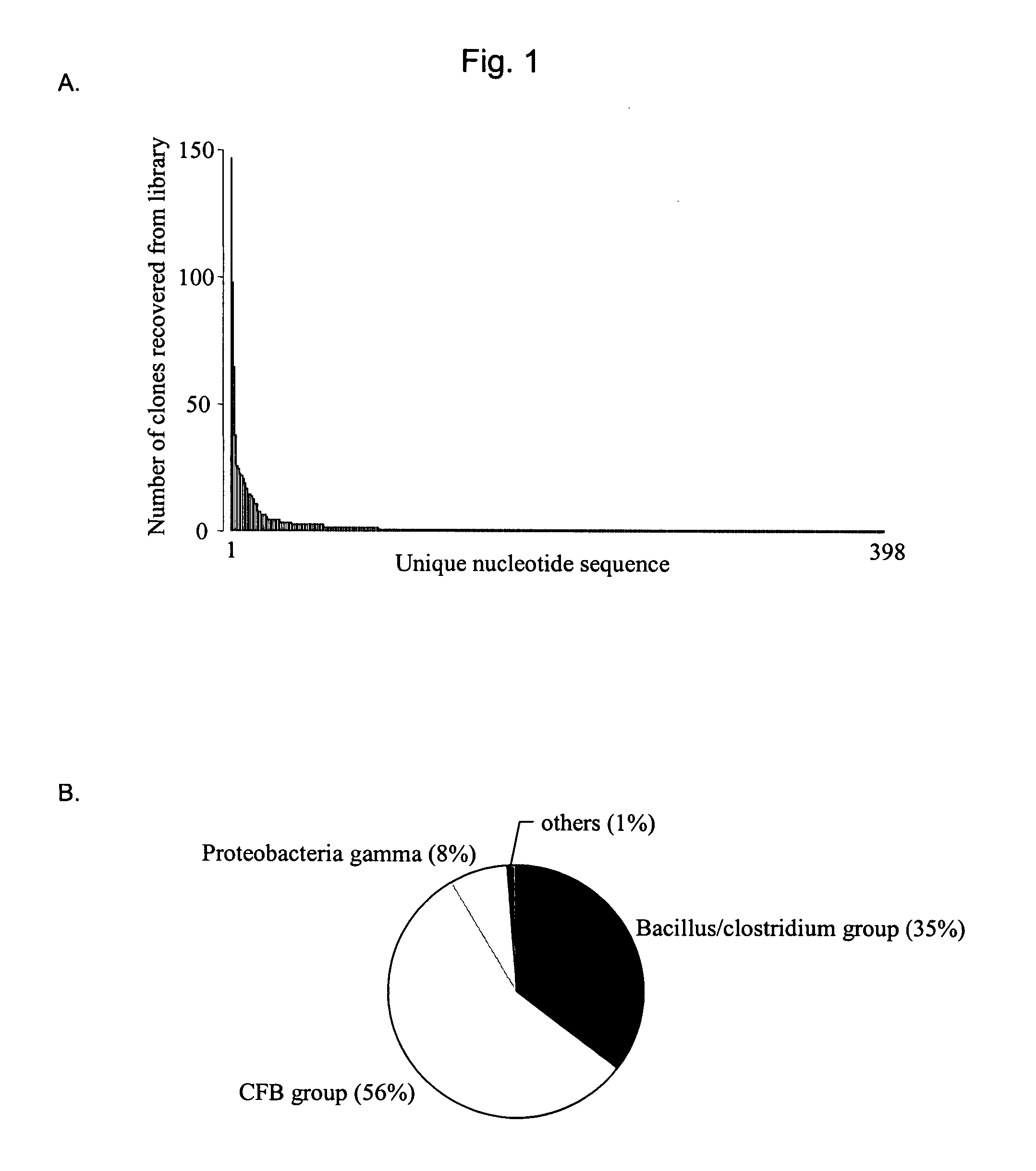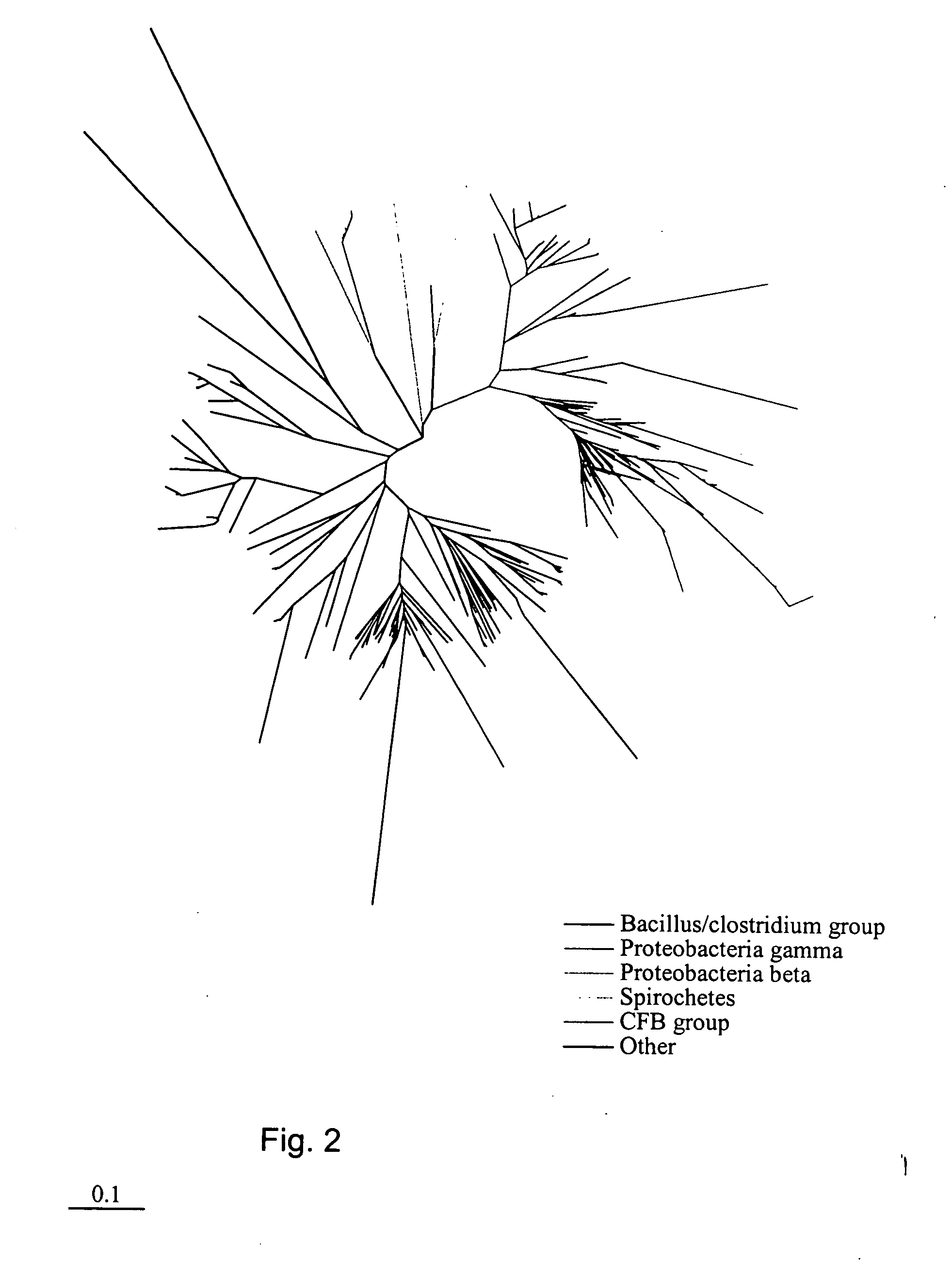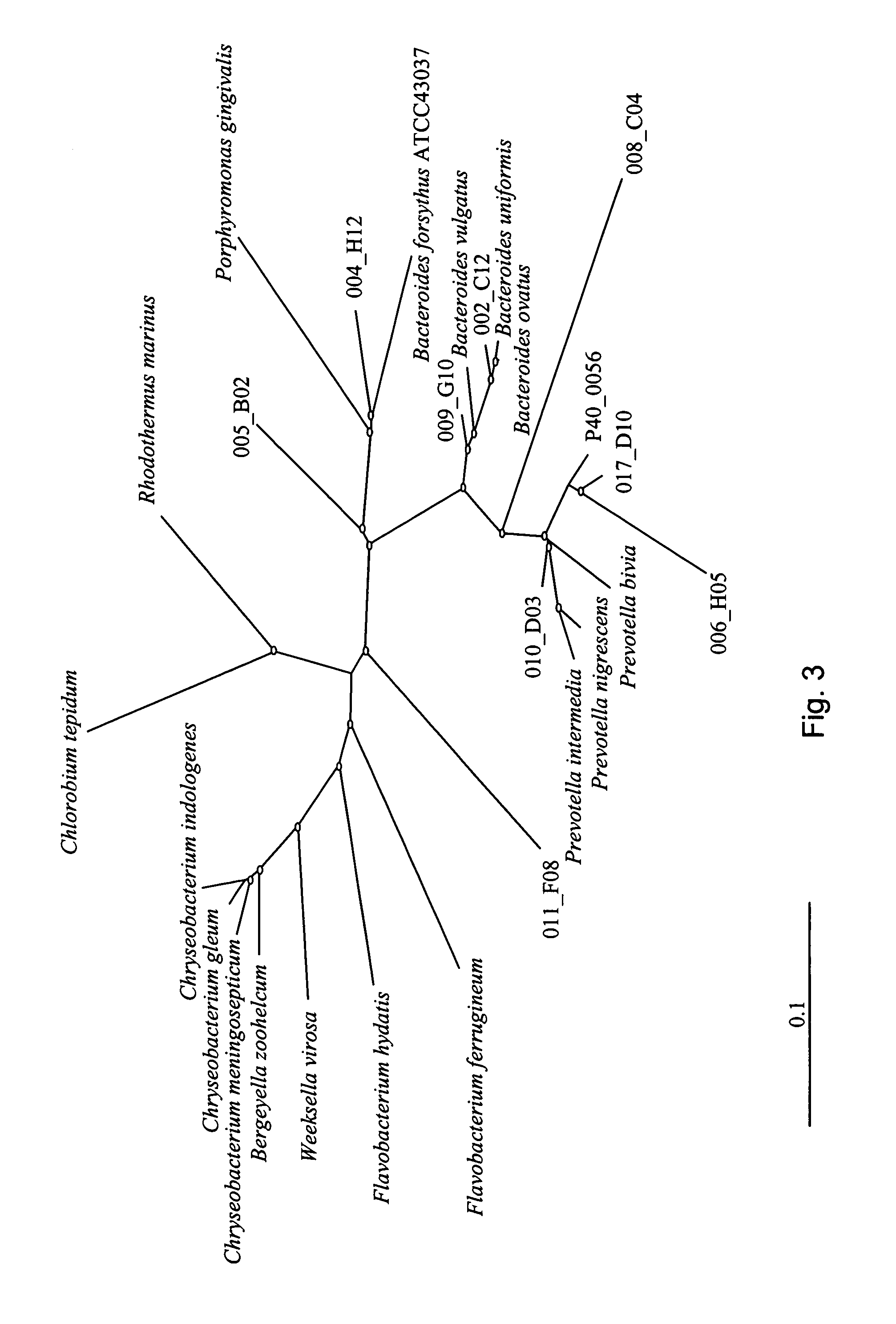Methods of identifying, characterizing and comparing organism communities
- Summary
- Abstract
- Description
- Claims
- Application Information
AI Technical Summary
Benefits of technology
Problems solved by technology
Method used
Image
Examples
example 1a
[0067] Pig feces are a tractable microbial community, rich in microbial life (estimated to exceed 1011 organisms per g of feces, Finegold, et al. 1974. Am. J Clin. Nutr. 27:1456-1469, and Moore, et al. 1974. Appl. Microbiol. 27:961-979), for which there is a wealth of descriptive literature. The invention described herein may be applied to any number of various sources of microorganism communities as would be apparent by one of ordinary skill in the art.
[0068] Wheat and barley are the primary feed ingredients for some pigs, while corn is the major ingredient of feed in parts of North America. Wheat and barley have higher levels of non-starch polysaccharides than corn and could have an effect on the composition of gut microflora in mammals eating these diets. Total genomic DNA from the ideal contents samples from pigs fed antibiotic-free diets containing corn, wheat or barley as the primary energy source may be used to create cpn60 sequence libraries using the methods disclosed here...
example 1b
[0121] In this example, forty-five pigs (35 days of age) were fed diets containing corn (yellow dent), wheat (Laura) or barley (Brier) as the primary source of energy for 3 weeks. Pig diets were formulated to contain similar digestible energy and 3.15 g of digestible lysine per Mcal digestible energy. These diets did not contain any antibiotics. Pig body weight and feed intake were measured. At the end of the experiment, pigs were euthanized by CO2 asphyxiation and exsanguinations, and their intestinal tracts were removed. Samples of digestive contents (digesta) were collected aseptically from the mid-ileum (75% of the distance between the duodenum and the ileo-caecal junction) and caecum. The numbers of total aerobes, total anaerobes, Enterobacteria, Lactobacillus spp., Clostridium spp. and Streptococcus spp. present in the digesta samples were enumerated as described (Estrada et al. 2001. Can.J.Anim.Sci. 81:141-148).
[0122]
[0123] Total genomic DNA was isolated from 200 mg of ideal...
example 2
[0133] Vaginal swab samples were obtained from two individual human subjects. Using methods similar to those described in Example 1, total genomic DNA was isolated from the samples and subjected to universal cpn60 primer PCR to amplify partial cpn60 gene sequences. Libraries of partial cpn60 sequences were created by ligating the PCR products into cloning vectors. Ninety-six clones were randomly chosen from each library (BV1 and BV2). Sequencing of the isolated clones yielded 84 and 74 complete, unambiguous sequences from BV1 and BV2 libraries, respectively. Unique sequences within each library were identified (see SEQ ID NOs: 12 through 45) and frequencies of each of the sequences were calculated. Each unique sequence was compared to the cpnDB database and putative identifications were made (Table 7). Frequencies of various taxonomic groups were compared across the two libraries (FIG. 12) and detailed phylogenetic analysis of library constituents was performed to solidify their seq...
PUM
| Property | Measurement | Unit |
|---|---|---|
| Ratio | aaaaa | aaaaa |
| Frequency | aaaaa | aaaaa |
Abstract
Description
Claims
Application Information
 Login to View More
Login to View More - R&D
- Intellectual Property
- Life Sciences
- Materials
- Tech Scout
- Unparalleled Data Quality
- Higher Quality Content
- 60% Fewer Hallucinations
Browse by: Latest US Patents, China's latest patents, Technical Efficacy Thesaurus, Application Domain, Technology Topic, Popular Technical Reports.
© 2025 PatSnap. All rights reserved.Legal|Privacy policy|Modern Slavery Act Transparency Statement|Sitemap|About US| Contact US: help@patsnap.com



